#Biodegradable Polybags
Explore tagged Tumblr posts
Text
Chinese Straw Manufacturer Meets Brand Needs
As customization becomes a standard expectation in packaging, many international buyers are placing a Chinese Straw Manufacturer in the middle of their product innovation strategies to offer eco-friendly options that also align with their brand aesthetics. Soton Straws, with its technical capabilities and sustainable mission, is helping businesses transition to greener, personalized packaging experiences.
Today’s consumers not only want straws that are biodegradable or compostable—they also care about design, feel, and even messaging. This has led to a new era where drinking straws are both functional and communicative. Soton Straws is at the forefront of this shift, enabling companies to launch unique straw products with minimal lead time and scalable volume.
The company’s strength lies in its advanced customization services. Businesses can select from a wide range of diameters, colors, and surface finishes. Need striped PLA straws for juice bars? Or glossy printed paper straws for holiday campaigns? Soton’s design team supports development from concept to final artwork, offering flexible printing options like flexo and offset.
More than just looks, performance matters. Soton uses raw materials that are food-grade, safe for both hot and cold beverages, and resistant to early degradation. From single-use café straws to multi-pack shelf-ready goods, each product undergoes testing for strength, moisture resistance, and packaging durability.
Global buyers also benefit from Soton’s commitment to responsible sourcing. Their raw paper is FSC-certified, and their PLA straws are derived from renewable resources like cornstarch. For clients in regions where compostability is a legal requirement, Soton provides full documentation on EN13432 and BPI compliance, helping to ease import customs and brand audits.
What makes working with Soton Straws especially attractive is their responsiveness. Their team supports international clients with English-language service, tailored MOQ options, and fast prototype delivery. This is crucial for companies that want to test market new concepts or introduce seasonal product lines with tight launch windows.
With expanding global demand, delivery capacity becomes a priority. Soton’s logistics department manages direct shipping to retailers, warehouse distribution centers, and even fulfillment hubs for e-commerce. Packaging options include display cartons, paper wraps, and recyclable polybags—all available with private labeling or branded artwork.By choosing a reliable Chinese Straw Manufacturer like Soton Straws, brands can bridge sustainability with creativity and enhance product value in competitive markets.For more customization options, visit: https://www.sotonstraws.com/ .
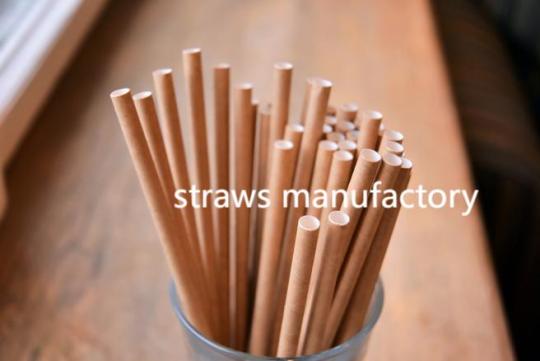
0 notes
Text
Paper Packaging Market Consumer Demand and Environmental Concerns
The paper packaging market has been witnessing significant growth as industries and consumers prioritize sustainability, recyclability, and biodegradable materials over conventional plastic packaging. As global concerns about environmental impact increase, paper-based packaging is becoming a preferred alternative in various sectors, including food and beverage, e-commerce, healthcare, and retail. The demand for eco-friendly packaging solutions is further fueled by strict government regulations, consumer preferences, and advancements in packaging technologies.
This article explores the key drivers shaping the paper packaging market and contributing to its steady expansion.
1. Rising Environmental Concerns and Sustainability Initiatives
One of the most prominent drivers of the paper packaging market is the increasing awareness of environmental sustainability. Governments, organizations, and consumers are advocating for sustainable packaging solutions to reduce plastic pollution, carbon footprint, and deforestation. Paper-based packaging materials, which are biodegradable and recyclable, align well with global sustainability goals.
Companies are also adopting circular economy models that promote the reuse and recycling of paper packaging materials. These initiatives not only support environmental conservation but also enhance brand reputation, attracting eco-conscious consumers.
2. Stringent Government Regulations on Plastic Packaging
Governments worldwide are implementing stringent regulations to reduce the use of plastic packaging and encourage sustainable alternatives. Many countries have imposed bans on single-use plastics and introduced policies that promote biodegradable and recyclable packaging materials.
For instance, the European Union’s Packaging and Packaging Waste Directive and similar policies in North America and Asia require businesses to adopt eco-friendly packaging solutions. These regulations are driving companies to switch from plastic-based packaging to paper-based alternatives, boosting the paper packaging market.
3. Increasing Demand from the E-commerce Industry
The rapid growth of e-commerce and online shopping has significantly increased the demand for paper-based packaging solutions. With millions of parcels being shipped daily, companies require sustainable, durable, and cost-effective packaging options.
Corrugated boxes, paper-based mailers, and protective paper wraps have become essential for e-commerce businesses, replacing plastic bubble wraps and polybags. Additionally, leading online retailers are prioritizing sustainable packaging to enhance customer experience and comply with environmental regulations.
4. Advancements in Paper Packaging Technologies
Innovations in paper packaging materials and manufacturing processes are playing a crucial role in market growth. Companies are developing high-performance paper-based solutions with improved durability, water resistance, and grease-proof properties.
For instance, bio-based coatings and barrier technologies are enhancing the functionality of paper packaging, making it suitable for food, pharmaceutical, and industrial applications. Digital printing advancements also allow businesses to create attractive and customizable paper packaging without relying on plastic-based materials.
5. Growing Consumer Preference for Sustainable Packaging
Consumer preferences are shifting towards environmentally friendly packaging solutions. Studies show that consumers are more likely to choose products with sustainable packaging, particularly in the food and beverage sector.

As awareness of plastic pollution and climate change increases, buyers are demanding biodegradable, recyclable, and compostable packaging options. This growing preference is compelling brands to replace plastic packaging with paper-based alternatives, further driving the market.
6. Cost-Effectiveness and Abundant Availability of Raw Materials
Paper packaging is often considered more cost-effective than plastic alternatives in the long term, particularly as recycling technologies improve. The availability of renewable raw materials, such as sustainably managed forests and agricultural residues, ensures a steady supply for paper packaging production.
Many companies are investing in recycling infrastructure to reduce costs and enhance the efficiency of paper packaging production. These developments are making paper packaging an economically viable and environmentally sustainable choice for businesses.
7. Expansion in the Food and Beverage Industry
The food and beverage industry is one of the largest users of paper-based packaging. Increasing concerns over food safety, hygiene, and environmental impact have led to the widespread adoption of paper-based cartons, wraps, and biodegradable containers.
Many fast-food chains, restaurants, and beverage companies are replacing plastic straws, cups, and takeaway boxes with paper-based alternatives to align with sustainability goals. This trend is significantly contributing to the expansion of the paper packaging market.
8. Growth of Recycling Infrastructure and Circular Economy
Investments in recycling facilities and waste management systems are improving the efficiency of paper packaging recycling. Many governments and private organizations are promoting circular economy initiatives, where paper packaging materials are collected, recycled, and repurposed into new products.
This approach not only reduces waste but also enhances the sustainability of the paper packaging market. Companies that integrate closed-loop recycling systems into their supply chains are gaining a competitive advantage in the industry.
9. Increasing Brand Awareness and Corporate Social Responsibility (CSR) Initiatives
Many companies are incorporating sustainability into their corporate social responsibility (CSR) strategies. Businesses that prioritize environmentally friendly packaging solutions enhance their brand reputation, attract eco-conscious consumers, and gain a competitive edge in the market.
Sustainability-focused branding helps companies build trust and loyalty among consumers. Brands that proactively switch to paper-based packaging are often perceived as more ethical and responsible, further driving the demand for sustainable packaging solutions.
10. Innovations in Biodegradable and Compostable Paper Packaging
The development of biodegradable and compostable paper packaging is opening new opportunities for market growth. Companies are investing in research and development to create paper-based materials with enhanced strength, flexibility, and moisture resistance.
Innovative packaging solutions, such as plant-based coatings and fiber-based packaging, are enabling paper packaging to compete with plastic in terms of performance and durability. These innovations are expected to drive the market further in the coming years.
Conclusion
The paper packaging market is experiencing rapid growth, driven by environmental concerns, government regulations, consumer preferences, and technological advancements. As industries shift toward sustainable packaging solutions, the demand for paper-based materials is expected to rise across various sectors.
Companies that embrace eco-friendly packaging and invest in innovation will be well-positioned to capitalize on market opportunities. With continuous advancements in recycling infrastructure and biodegradable packaging solutions, the paper packaging industry is set for long-term expansion.
0 notes
Text
Price: [price_with_discount] (as of [price_update_date] - Details) [ad_1] From the brand Royal Enfield Apparel is about synergizing style and functionality, which inspires people to come forward and be a part of the motorcycling culture. Flaunt your love for the motorcycling way of life with our lifestyle apparel range that lets you express and explore the rider’s spirit in you, on and off the saddle. Explore our best sellers! RAW MATERIAL Royal Enfield is a member of Better Cotton Program - Global sustainability program for better farm practices Reduce: Use of water, fertilisers and pesticides Enhance: Yield and profitability for farmers MANUFACTURING Green Factory: Zero Liquid Discharge Enables water recycling Renewable Energy Factory: solar & wind power PACKAGING 100% Sustainable Packaging FSC certified carton boxes to conserve forests Global program for Ethical Reforestation Non-plastic polybags that biodegrade in 1 year The Rohtang jacket is crafted from a mix of mesh and polyester, designed to provide ventilation and protection from the elements at the same time. Take a jaunt around the city or ride out for a weekend trip with your crew in this all-season jacket that comes with a detachable thermal liner, built with an integrated waterproof and breathable rain liner. Equipped with Knox MICROLOCK CE Level 1 armours at the shoulders and elbows, these armours are super soft to touch but absorbs maximum energy when impacted. Reinforced with Cordura fabric patches which ensure a higher abrasion resistance. Construction: 90% of jacket is high abrasion resistant Polyester Mesh and 10% 600 D polyester; Abrasion Resistant: Premium high abrasion resistant mesh with high air permeability; Cordura fabric at impact zones for high abrasion resistance; Layers : 2 ; Integrated rain liner; Detachable thermal liner; Weather protection ; Impact Protection: 610D polyester cordura at impact zones Knox flexiform Level 1 armors for shoulder and elbow ; Perforated Eva Foa at the back; Fit: Regular ; Ventilation - 90% mesh makes it fully ventilated Adjustment tabs on cuffs, waist, biceps and forearms; Reflective piping at biceps makes it visible from back and sides in low light and night riding Genuine YKK zippers at centre front Cushioned comfort collar; Pockets – 4; 2 front pockets, 1 chest pocket and 1 pocket in the inside lining, Remove protective armours Close all zippers before washing Machine wash warm Do not use any fabric softeners or bleach Do not wring Do not iron Hang dry in the shade and away from any sort of heat source [ad_2]
0 notes
Text
Compostable & Biodegradable Refuse Bags Market Size, Growth Analysis Report, Forecast to 2033
The global compostable & biodegradable refuse bags market is on a trajectory of substantial growth, with forecasts indicating a value of USD 653.0 million by 2033, up from USD 318.1 million in 2023, representing a robust Compound Annual Growth Rate (CAGR) of 7.5% over the forecast period. This surge is propelled by increasing awareness about environmental sustainability and the rising demand for plastic alternatives.
The escalating demand for compostable & biodegradable refuse bags is driven by several factors, including the global shift towards eco-friendly materials and heightened health consciousness among consumers. As plastic pollution continues to pose a significant threat to the environment, there is a growing emphasis on adopting sustainable alternatives.
The proliferation of technology and government initiatives aimed at promoting eco-friendly materials further augments market opportunities for compostable & biodegradable refuse bags. End-use industries such as retail, institutional, and industrial sectors are increasingly adopting these bags, spurred by the need for sustainable waste management practices.
Explore the Historical Context: Access the Old Report Source Here!
Moreover, the rapid growth of organic products and the focus on sustainability are fueling demand for compostable & biodegradable refuse bags across various sectors. From hospitals and hotels to restaurants and households, there is a growing preference for eco-friendly waste disposal solutions.
Manufacturers are focused on manufacturing sustainable bags to reduce environmental plastic pollution. According to a survey, around 150 million metric tons (MMT) of plastic are already floating in the oceans, and due to its hazardous chemical, millions of aquatic animal’s life die annually.
Moreover, several reports found that micro-plastics can affect plants’ soil pH and rooting ability. Therefore, manufacturers have been using eco-friendly solutions to develop paper bags to control environmental pollution.
Key Takeaways:
The compostable & biodegradable refuse bags market is expected to have a valuation of USD 653.0 million by 2033.
With a CAGR of 7.5%, the global market is increasing during the forecast period.
The United States compostable & biodegradable refuse bags market is anticipated to grow at a CAGR of 7.2% through 2033.
With a CAGR of 7.0%, the United Kingdom market significantly uplifts during the forecast period.
The Indian market is expected to grow at a CAGR of 10.1% over the forecast period.
Who is Winning?
The prominent vendors are growing the market by contributing essential roles during the forecast period. Globally, the rising pollution through plastic is a huge problem. To solve this problem, manufacturers are using sustainable and innovative products that may reduce environmental pollution. Therefore, rising research and development activities to use eco-friendly bags are expected to increase the market growth.
Prominent Players in the Market are as follows:
Mondi Group
Sphere Group
Vegware Global
VICTOR Güthoff & Partner GmbH
Cedo Ltd.
BioBag International AS
PLAST-UP
Polybags Ltd
Clondalkin Group Holdings B.V.
Plastiroll Oy Ltd
The Biodegradable Bag Company Ltd
QUICKPACK Haushalt + Hygiene GmbH
The Compost Bag Company
SIMPAC
TERDEX GmbH
Recent Developments in the Compostable & Biodegradable Refuse Bags Market are:
In 2020, Ecosac Utility bags, India’s leading brand of eco-friendly shopping bags and other utility bags, launched a new range of compostable and Oxo-Biodegradable garbage bags called Kachra Sack. The new eco-friendly bags are an ideal alternative to plastic bags and help to reduce pollution levels.
In 2021, Indian Startup SpruceGel announced the launch of its new range of eco-friendly and compostable bags. The new bags range from carry bags and garbage bags to apparel bags.
In 2021, Compostic, one of the first creators of certified home-compostable plastic alternatives, launched a new range of home-compostable cling wrap and resalable bags in the USA.
Compostable & Biodegradable Refuse Bags Market by Category
By Capacity:
7 to 20 Gallons
20 to 30 Gallons
30 to 40 Gallons
40 to 55 Gallons
Above 55 Gallons
By Product Type:
Biodegradable
Compostable
By Material Type
PLA
PBS
PBAT
PHA
Starch Blends
Cellophane
Paper
By Thickness:
0 to 0.7 mil
0.7 to 0.9 mil
0.9 to 1.5 mil
Above 1.5 mil
By End Use:
Retail & Consumer
Industrial
Institutional
By Region:
North America
Latin America
Europe
South Asia & Pacific
East Asia
The Middle East & Africa
0 notes
Text
Compostable Biodegradable Refuse Bag Market Size, Share, Trends, Key Drivers, Demand and Opportunity Analysis

"Compostable Biodegradable Refuse Bag Market Report, the strength and weakness of the competitors can be assessed. Also, the dimensions of the marketing problems can be identified. It helps in ascertaining the distribution methods suited to the product and estimating the market share and probable sales volume of a firm. This industry analysis report speaks in detail about the manufacturing process, type and applications.
Global Compostable Biodegradable Refuse Bag Market, By Capacity (7-20 Gallons, 20-30 Gallons, 30-40 Gallons, 40-55 Gallons, Above 55 Gallons), Product Type (Biodegradable, Compostable), Material Type (Polylactic Acid (PLA), Polyhydroxyalkanoate (PHA), PBS, PBAT, Starch Blends, Cellophane, Paper), Thickness (0-0.7 mil, 7-0.9 mil, 9-1.5 mil, Above 1.5 mil), End-Use (Retail and Consumer, Industrial, Institutional) – Industry Trends and Forecast to 2029
Access Full 350 Pages PDF Report @
Global compostable biodegradable refuse bag market was valued at USD 265.69 million in 2021 and is expected to reach USD 514.06 million by 2029, registering a CAGR of 8.60% during the forecast period of 2022-2029. In addition to the market insights such as market value, growth rate, market segments, geographical coverage, market players, and market scenario, the market report curated by the Data Bridge Market Research team includes in-depth expert analysis, import/export analysis, pricing analysis, production consumption analysis, patent analysis and technological advancements.
Market Players Covered:
Some of the major players operating in the compostable biodegradable refuse bag market are
Mondi (U.K.) Vegware Ltd, (U.K.) VICTOR Güthoff & Partner GmbH (Germany) CeDo Ltd (U.K.) BioBag International AS (Norway) Polybags Limited. (U.K.) CLONDALKIN GROUP (Netherlands) Plastiroll Oy LTD (Finland) The Biodegradable Bag Company Ltd. (India) MirPack (Spain) The Compost Bag Company nv/sa (Belgium) SIMPAC. (South Korea) TERDEX GmbH (Germany) Pack-It BV (Netherlands) Cromwell Polythene Ltd. (U.K.) Flexopack (Greece) Virosac Srl (Italy)
The report provides insights on the following pointers:
Market Penetration: Comprehensive information on the product portfolios of the top players in the Compostable Biodegradable Refuse Bag Market.
Product Development/Innovation: Detailed insights on the upcoming technologies, R&D activities, and product launches in the market.
Competitive Assessment: In-depth assessment of the market strategies, geographic and business segments of the leading players in the market.
Market Development: Comprehensive information about emerging markets. This report analyzes the market for various segments across geographies.
Market Diversification: Exhaustive information about new products, untapped geographies, recent developments, and investments in the Compostable Biodegradable Refuse Bag Market.
Global Compostable Biodegradable Refuse Bag Market survey report analyses the general market conditions such as product price, profit, capacity, production, supply, demand, and market growth rate which supports businesses on deciding upon several strategies. Furthermore, big sample sizes have been utilized for the data collection in this business report which suits the necessities of small, medium as well as large size of businesses. The report explains the moves of top market players and brands that range from developments, products launches, acquisitions, mergers, joint ventures, trending innovation and business policies.
The following are the regions covered in this report.
North America [U.S., Canada, Mexico]
Europe [Germany, UK, France, Italy, Rest of Europe]
Asia-Pacific [China, India, Japan, South Korea, Southeast Asia, Australia, Rest of Asia Pacific]
South America [Brazil, Argentina, Rest of Latin America]
The Middle East & Africa [GCC, North Africa, South Africa, Rest of the Middle East and Africa]
This study answers to the below key questions:
What are the key factors driving the Compostable Biodegradable Refuse Bag Market?
What are the challenges to market growth?
Who are the key players in the Compostable Biodegradable Refuse Bag Market?
What are the market opportunities and threats faced by the key players?
Browse Trending Reports:
Fraxiparine Market Polycythemia Vera Treatment Market Pleurisy Market Low Calorie Food Market Yoga Apparel Market Folic Acid Market Chemicals Market Oyster Mushroom Market Intraoral Cameras Market Media Monitoring Tools Market Ayurvedic Personal Products Market Surgery Medical Bandage Market Non Starch Polysaccharides In Animal Feed Market Infused Dried Fruit Market More Electric Aircraft Market Flowers And Ornamental Plants Market Groove Pancreatitis Treatment Market Polyvinyl Alcohol Pva Market Tumor Tracking Systems Market Laminated Veneer Lumber Market
About Data Bridge Market Research:
Data Bridge set forth itself as an unconventional and neoteric Market research and consulting firm with unparalleled level of resilience and integrated approaches. We are determined to unearth the best market opportunities and foster efficient information for your business to thrive in the market. Data Bridge endeavors to provide appropriate solutions to the complex business challenges and initiates an effortless decision-making process.
Contact Us:
Data Bridge Market Research
US: +1 614 591 3140
UK: +44 845 154 9652
Hong Kong: +852 8192 7476
Email: [email protected]"
0 notes
Text
Brand Identity Design for Good Packaging| Liveblack
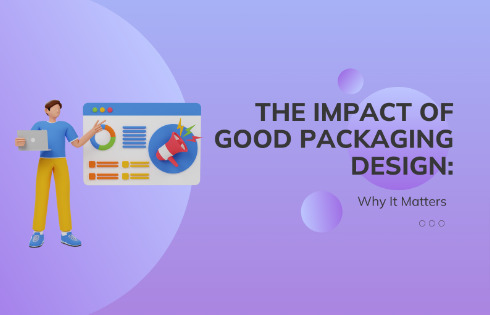
While exploring new markets or enjoying a slow walk doing window shopping while holding coffee in your hands, I’m sure you have come across so many products that tempt your shopping desires. However, a star product must have made you love its packaging design. Am I right or am I right? Good packaging is the sign of a brand that wants to be prominent in the ocean of competitor’s products.
Package design should be in a way where precise information is given. There’s a lot in the branding package journey and we will get them all.
Now the question is what makes packaging beautiful? We all heard, “Beauty lies in the eyes of the beholder.” But does everyone have the same definition of beauty? Now that’s the point where you have to brainstorm. Because you cannot put a muffin in the box of pizza. To design a package, you need to understand the taste of your target audience. Research is a must when you are going to brainstorm for package design. Since packaging is essential to a brand, you must consider the customer’s profile to design brilliantly.
A beautiful package is enough to create a buzz around your brand name.
What are the main elements we can think of when discussing package design? What does the packaging design process include? Here, what matters the most is the material a package is made from, its shape, and its illustrations. All these three elements blended perfectly can make you the star of the universe or done terribly to get you the packaging design nightmares.
Brilliant packaging is what customers desire secretly. A brand can achieve distinctiveness by being more creative and artistic. Branding your business needs enough time and effort to not only tempt the customer base but also make them trust your brand.
The simplest question anyone can ask is how to describe packaging design. Well, the goal is to make your customers think about your brand when searching for a product like you sell. If your customers love how you’ve designed your packaging, they surely return to you again and again. In this digital age, some of them would love to share photos of product packaging on their social media. This can be an effective marketing strategy for you without paying a single penny. Your packaging design is a bonus to increase brand awareness. Work smart on it as the saying goes like this — the first impression is the last.
Do you know a good packaging design can affect the buying decision of a customer? You have felt this while going to shop. The market has always demanded unique packaging. Let’s take a simple example — if the pizza does not have cheesy cheese or tempting toppings, you’ll not pick that pizza up. Right? In like manner, if the packaging doesn’t have the touch of innovation, it can lead you to nowhere.
There are types of packaging design and not a single packaging design can do justice to every product. Simple, bold, clean, safe, or luxurious, there are many types of packaging designs available to cater to the needs of the product in it. You have to choose what suits your product the best and design accordingly.
One thing that has to be remembered is how pretty or luxurious the packaging is, if it cannot protect and hold the product in a safe and right manner, it is worthless. Overly designed and stuffed information won’t help your brand in any way. Cluttered labels, unclear information, and unnecessary content on the packaging are signs of poor brand packaging design.
To be authentic, artistic, and clear in packaging design, setting up a bar for the brand to make customers put their trust in you. Having packaging design ideas is good but an idea won’t do anything. It’s a long process where you have to consider your target audience for what kind of design or aesthetics they would love to see on the products they want to buy. Because every category of product needs to be wrapped with different materials, be it plastic, glass, biodegradable, paper bags, polybags, boxes, and many others.
Brand identity design includes everything from the logo, packaging, color palette, typography, etc. Packaging design gives you a chance to be more easily remembered than words. Good packaging conveys a message to customers. Designing a package is not only about impressing the audience but to creating a strong brand image, and making your products recognizable in the market.
A professional, clean, and aesthetically pleasing package design remarkably presents a product. We are a graphic design agency specializing in package design. We have years of experience in innovative and successful package design to make your brand stand out in the market.
#packaging design process#Branding your business#how to describe packaging design#types of packaging design#packaging design ideas#Brand identity design#graphic design agency#Liveblack
0 notes
Text
Global E-commerce Packaging Market Is Estimated To Witness High Growth Owing To Rising Online Shopping Trends
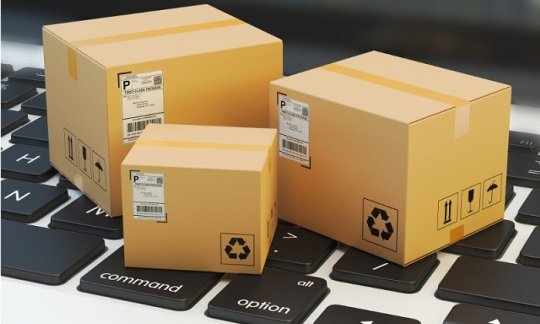
The global E-commerce Packaging Market is estimated to be valued at US$26.3 billion in 2021 and is expected to exhibit a CAGR of 6.2% over the forecast period 2022-2030, as highlighted in a new report published by Coherent Market Insights. A) Market Overview: E-commerce packaging refers to the packaging materials and solutions used for packaging products for online retail businesses. It plays a crucial role in protecting the products during transit and ensuring they reach the customers in good condition. The market offers a wide range of packaging options, including corrugated boxes, bubble mailers, polybags, and protective packaging materials. With the increasing popularity of online shopping, the demand for efficient and sustainable packaging solutions has witnessed significant growth. E-commerce businesses are constantly looking for packaging solutions that not only protect the products but also align with their sustainability goals. This has led to the adoption of eco-friendly packaging materials such as recycled paper and biodegradable plastics. The need for streamlined packaging operations and faster delivery times has also driven the demand for innovative packaging solutions. Companies are investing in technologies such as automated packaging systems and smart packaging solutions to enhance their efficiency and meet the growing demands of e-commerce customers. B) Market Key Trends: One key trend in the global e-commerce packaging market is the growing emphasis on sustainable packaging solutions. As consumers become increasingly conscious of environmental issues, they prefer businesses that offer eco-friendly packaging options. This trend has pushed many e-commerce companies to shift towards sustainable materials and practices. For example, several major players in the market, including Amcor plc and Mondi Group, have introduced recyclable and biodegradable packaging solutions to cater to the rising demand for eco-friendly packaging. C) PEST Analysis: - Political: Governments around the world are implementing regulations and policies to promote sustainable packaging practices. This includes initiatives to reduce plastic waste and encourage the use of environmentally friendly materials. - Economic: The rapid growth of e-commerce has created a lucrative market for packaging solutions. As online shopping continues to expand, the demand for efficient and cost-effective packaging materials is expected to rise. D) Key Takeaways: - The global e-commerce packaging market is expected to witness high growth, exhibiting a CAGR of 6.2% over the forecast period, due to increasing online shopping trends and the need for efficient and sustainable packaging solutions. - In terms of regional analysis, North America is expected to dominate the market due to the presence of major e-commerce players and the high penetration rate of online shopping in the region. Asia Pacific is anticipated to be the fastest-growing region, driven by the increasing adoption of e-commerce platforms in countries like China and India. - Key players operating in the global E-Commerce Packaging Market Growth include Amcor plc, Mondi Group, International Paper Company, Smurfit Kappa, DS Smith, Klabin S.A., Georgia-Pacific LLC, Rengo Co., Ltd., Orora Packaging Australia Pty Ltd, and Nippon Paper Industries Co., Ltd. These players are focusing on product innovation and sustainability to maintain their market position and cater to the growing demands of the e-commerce industry. The global e-commerce packaging market is experiencing significant growth due to the rising popularity of online shopping. The demand for efficient and sustainable packaging solutions has driven the adoption of eco-friendly materials and innovative technologies. With the continuous growth of e-commerce, the market is expected to expand further in the coming years.
#E-commerce Packaging#E-commerce Packaging Market#E-commerce Packaging Market Growth#E-commerce Packaging Market Insights#E-commerce Packaging Market Size#Packaging
0 notes
Text
Biodegradable Polybags
Biodegradable Polybags are available from Eco Garment Bags. Biodegradable plastic bags are made up of natural products and they are fully compostable. Explore more- https://www.ecogarmentbags.com/
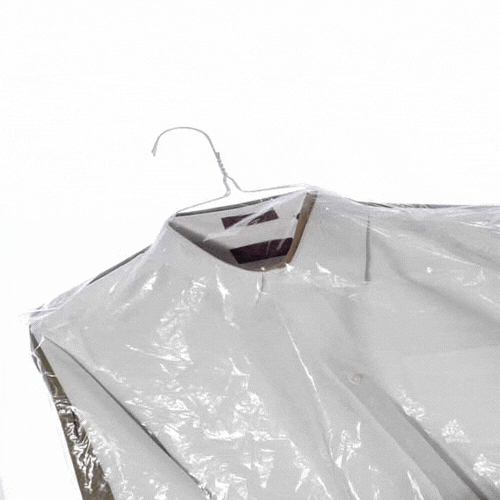
10 notes
·
View notes
Photo

POLYBAGS IN THE FASHION INDUSTRY: EVALUATING THE OPTIONS
There are five key material choices to look at when considering polybags – or equivalent packaging. These are LDPE (Polyethylene), recycled LDPE, bio-based LDPE, compostable plastic blends, paper and polyvinylalcohol (PVA). Each of these materials comes with specific trade-offs and their own unique qualities. The environmental impact of these materials differs, with recycled and bio-based LDPE being the lowest in greenhouse gas emissions, whilst materials such as PVA and paper fare less well. Compostable plastics are more difficult to assess due to the blends of bio-based and petroleum-based plastics used – but are generally quite good – more so if they have a high bio-based content.
Read this extensive study from fashion for good here.
#polybag#sustainablefashion#sustainablity#agtextilesstudio#circulareconomy#recycled#ldpe#compostable#biodegradable
0 notes
Text
Choose slow. Choose eco.
Green Packaging. Can it help arrest plastic pollution and recover Earth’s environmental damage?
The rise of e-commerce in the past decade has unarguably been one of the major contributors to an upsurge in plastic consumption. The e-commerce industry supported innovations through fancy bubble wraps, branded duct tapes, airtight packs among others, to ensure goods’ safety, quality and aesthetic appeal. As for the environment, sheer neglect towards sustainability and lack of marketing has compelled us to ask the question - can we devise eco-friendly loopholes for such vital elements of our supply chain?
Plastic, the main culprit of this packaging problem, has been pitching towards large proportions of greenhouse emissions in turn contributing to climate change. Repeated and mass abuse of plastic lead to the recent introduction of 13 sustainable development goals by the United Nations rolling the ball for a conscious change in our decisions for a cleaner and greener planet. Thereby, the Buna team identifies plastic, a crucial yet dangerous foundation of the traditional approach to packaging, and takes ownership to change these established ways to modern and environment-friendly solutions.
So let's take a deep dive towards making our supply chain eco-friendly by unfolding the packaging problem.
Consisting of a mixture of Gen Y and Gen Z, the Buna team is sustainably aware and willing to work towards the support and contribution to a more mindful world in terms of fashion by constantly curating conscious alternatives to such hurdles. Therefore, we commence by going with 100% plastic-free polybags.
With loads of research and testing, we landed up with Cassava plastic bags. It looks and feels exactly like a plastic bag but the only difference is that it is not plastic. It is an organic polybag - put together exclusively from natural resources like cassava starch, vegetable oil, and organic resins. If you're thinking of eating it, well, go ahead! It is non-toxic. Due to its dissolvable qualities, it won't harm the water animals as well. This 'bioplastic' is a revolutionary solution to tackle the problems of traditional plastic as it is biodegradable and composts in just a few months.
Did you know? Around 30% of all clothes made around the world are never sold, according to the Australian Circular Association (ACTA). So what happens to these clothes? Well, it’s no surprise - they go to waste!
Hence, another major issue that needs our imminent attention is the waste problem of the fashion industry that keeps glorifying and contributing towards the rise of throwaway culture. However, the Buna team recognises this problem and therefore, Buna is a 100% made-to-order brand. They do not create stocks, which pushes their delivery timelines way ahead of fast fashion labels, but buyers are conscious of Earth’s burdens and problems today and are ready to wait for an eco-friendly product to arrive at their doorstep. Besides, this creates an opportunity to repurpose the waste material, the muslin fabric, by recycling and upcycling it into a raw fabric material bag with a pinch of refinement added with a buttoned closure. Lastly, to ensure the safety of our products, we place our packed garments in a cardboard box for undamaged delivery to our customers. Thus, this combination of recycled paper, cloth and nature bring us a step closer to making our supply chain more sustainable and eco-friendly.
That’s not all…
Do you know how many clothes are produced in a year? Well, let’s not go there in depth because it will take you a lifetime to calculate that. But each of these clothes has a hand tag which is usually made with a combination of unsustainable materials that cause havoc for the natural world. To tackle this problem, we have been using eco-conscious hand tags for the past 3 years to reflect our brand’s minimalistic approach. We have thoughtfully curated this innovative substitute as these are made from fabric waste embedded with seeds of either tulsi or marigold. Moreover, the plastic string that usually attaches the tag with the product is replaced by a jute string - making it completely plastic-free and environment friendly. The tag includes the description of the product and how to use the seed paper to grow a tulsi or marigold plant instead of just throwing it away. This helps us portray the holistic approach of our brand as an ally to sustainability and slow fashion.
By and large, the Buna team ardently believes in giving back to nature and, so here is the beginning of doing so. Although one might never be able to reverse the centuries of ill-practices we have put our planet through, the only solution is to minimise the adversity by conscious efforts and maximise endeavours that reflect creativity as well as innovation in the domain. Source Link: Choose slow. Choose eco.
1 note
·
View note
Text
Jute Hand Made Bags By Chouhan Rugs
In recent times, there has been a growing trend towards natural and organic material products, and one such trend that has gained popularity is the use of��jute handmade bags. Female youth, in particular, can be seen confidently carrying these Jute bags, considering them as trendy fashion statements. However, what many may not know is that the use of jute fibers to create various products dates back to our ancient times when plastic polybags or other synthetic materials were not available. Let's delve into the history of jute and explore how it has been used to create handcrafted bags for generations.
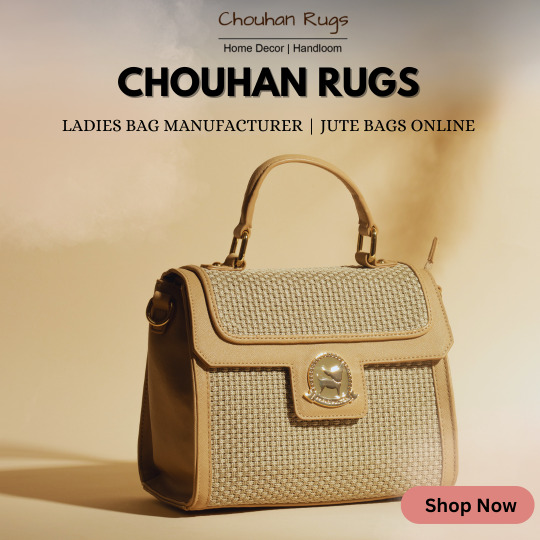
Jute Handmade Bags in jaipur in Modern Times: With the growing awareness about the need for sustainable and eco-friendly alternatives, jute handmade bags have made a comeback in modern times. Female youth, in particular, have embraced these bags as a fashion statement that reflects their concern for the environment and their appreciation for traditional craftsmanship. Jute handmade bags by us are now available in various designs, sizes, and styles, catering to the fashion-conscious youth who want to make a statement while being environmentally responsible.
One Of The Best jute baskets | Rugs for Home | Jute Rugs | Jute Cushion | Jute Cushion cover | round rugs online | jute pillow covers etc.
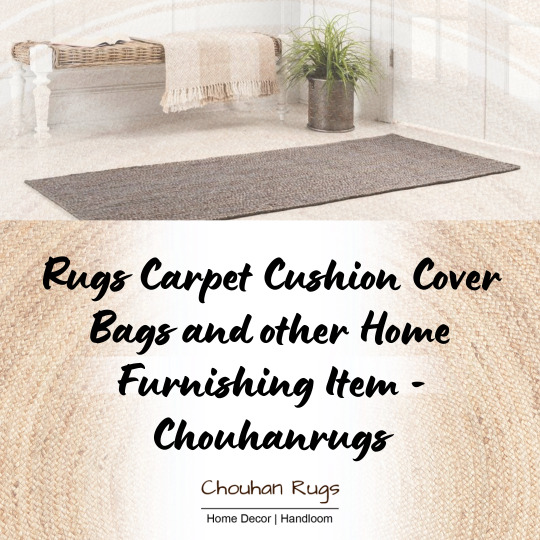
Benefits of Jute Handmade Bags: handmade bags offer several benefits that make them a popular choice among consumers today. Firstly, jute rugs is a natural and biodegradable material, making it an eco-friendly alternative to synthetic bags that contribute to environmental pollution. Jute is also a renewable resource, as it is harvested from the jute plant, which requires minimal pesticides and fertilizers, making it a sustainable choice. Additionally, jute fibers are strong, durable, and long-lasting, making jute bags ideal for everyday use. Jute bags also have a unique rustic and earthy aesthetic, adding a touch of natural elegance to one's fashion statement. We taking care of both Fashion and environment so we made products in both the manner.

Preserving Traditional Craftsmanship by Us: We made jute handmade bags not only promotes sustainability but also preserves traditional craftsmanship. Handmade jute bags are often crafted by skilled artisans who use age-old techniques passed down through generations. We help to preserve the art and skills of traditional weavers and craftsmen, supporting local economies and promoting cultural heritage.
Read Our Previous Blog:(Top 3 Natural Rugs designed by chouhan Rugs | Jaipur)
For more information and new updates Visit to our website:-chouhanrugs.com
Visit Our Social Links:
Facebook :https://www.facebook.com/HomeFurnisinghRugsCarpets/
Instagram :https://www.instagram.com/chouhanrugs/
Printrest : https://in.pinterest.com/chouhanrugs/
Youtube :https://www.youtube.com/channel/UCU7s9m_2gtvqar9Ob5FD8zA
#Handcrafted Carpet#home Decoration Rugs#branded handbags#branded ladies bags#ladies bag manufacturer#jute handmade rugs#Rugs for Home#jute rugs india#Office rugs#rugs store#Buy Printed Rugs#jute pillow covers#jute pillows#jute baskets online#jute Rugs
0 notes
Text
Polythene or Jute Bags to Market?
#jute
Mr. Mostakim went to the market a little early in the morning. Because fresh vegetables and fish can be found at this time. Whenever he bought some stuff noticed that there is no basket or bag to carry his groceries, and he forgot to take the market bag to hurry up today. Hence, vendor has put the stuff into a polybag and they will arrange the bag.
Always at the end of the purchase, he found that the items were kept in about seven polybags. Suddenly I saw a jute bag hanging in a nearby shop. The bag can be used for a long time, but the price is just a little bit more.
Mr. Mostakim thought and saw that he had seven polybags in the market. Suppose an average person uses five polybags to market. If one thousand shoppers shop every day then five thousand bags are being used every day.
After shopping, and coming back home, the bags are usually thrown in the trash. Then in 30 days from this market one and a half lakh bags are becoming the cause of environmental pollution. From one hundred such markets, one and a half crore polybags will be spread in the environment in a month.
On the other hand, even if a jute bag costs 50 rupees, if it can be used for 30 days, what will be the calculation? Of course, the huge amount of polybags thrown away will not pollute the environment. If 100% eco-friendly jute bags are left in the soil after use, they will rot and increase fertility. This means that the use of jute bags not only saves costs but also plays a role in decontaminating the environment. Jute is a biodegradable natural fiber stronger than plastic. On the other hand, plastics are non-biodegradable and obtained from refining crude oil that takes 400 years to degrade.
Jute is a biodegradable and extremely strong natural fiber, and decomposes in a matter of weeks. Plastics are non-biodegradable materials that take more than thousands of years to decompose, littering the environment for a much longer period.
#jute#jutebags#ecofriendly#ecofriendlyproducts#organic#sustainability#sustainable products#biodegradable#biodegradable products#organic products
0 notes
Text
Reading Week Homework
For our reading week homework, we were tasked to research two brands that we find inspirational.
The first brand I chose was Lucy & Yak, an independent, ethical clothing retailer specialising in dungarees. I find the story behind the brand inspirational, as partners Lucy Greenwood and Chris Renwick began by selling vintage clothing on Depop out of their van, before finding a business partner in India, who started to manufacture their signature dungarees. The guiding principles behind the brand are comfort and sustainability, creating long lasting, high quality clothing with a focus on ethical working practices, both in terms of people and the planet. Lucy & Yak, as a brand are entirely certified by the Global Organic Textile Standard (GOTS), which means that all steps of the textile supply chain have been regulated to meet the 'requirements for both ecological and labour conditions'. Lucy & Yak also use paper mailing bags to ship their orders and biodegradable plastic to protect individual products, and are working to offset their carbon emissions, partnering with various organisations to plant a current total of 29,086 trees.
I think that Lucy & Yak's brand identity is unique, as the story behind the brand and the owner's journey is a driving force across all their advertising, including their website, Instagram and tiktok, allowing for a more 'personal' and community based relationship with their consumers. They currently sell online and have 3 stores in Brighton, Bristol and Norwich. I also feel that Lucy & Yak differ from other ethical or sustainable clothing brands, in terms of their use of a vibrant colour palette and bold graphics (often florals or patterns) in their advertising and on the products themselves.
The customer demographic for this brand varies but is predominantly women in their late 20s-30s, with inclusive sizing ranging from a UK women's size 4-32. Whilst a lot of the clothing could be seen as quite youthful in terms of it's bright colours and playful patterns, I think the primary demographic doesn't include teens, due to the price point being somewhere between £40-90 for a pair of dungarees and £6-£30 for smaller accessories, such as hats, socks and cushions/tea towels made out of deadstock fabric.
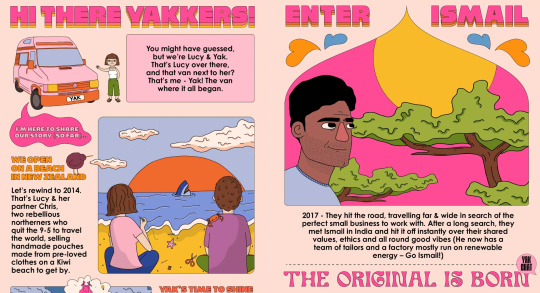
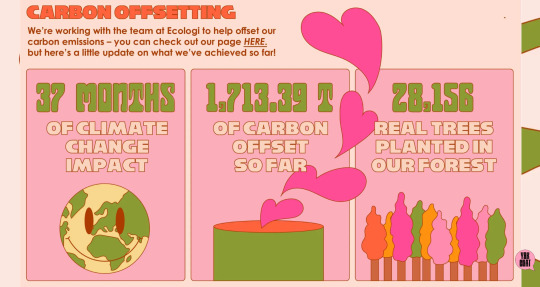
The second brand that I have researched is Stella McCartney, a luxury brand that produces high end, ethically sourced clothing, bags and beauty products. The brand has been strictly vegetarian, inline with Stella McCartney's personal beliefs, since it began, as well as having a strong focus on sustainability. Ways in which the brand promote sustainability include, using certified organic cotton, recycled nylon and polyester and 'clevercare', a garment labelling system explaining how to properly care for the clothes in order for them to last longer and therefore reduce consumer consumption. The brand also looks at sustainability in their packaging and since 2012, have only used paper that is FSC (Forest Stewardship Council) certified or made from 50% recycled content. Stella McCartney have also joined Fashion for Good's polybag collection scheme, collecting plastic garment bags from their London store and sending them for recycling.
Stella McCartney is a high-end brand, targeting wealthy customers and celebrities with clothing ranging from £200-£3000 and £50-£140 for beauty products. As well as online shipping to 40 different countries, products are sold in 46 stores across New York City, London, Paris, Milan, Tokyo, Shanghai and Beijing. One of the brand's most iconic products is the 'Falabella' bag, the 'original vegan luxury tote bag, characterised by its slouchy silhouette and diamond cut chain'.

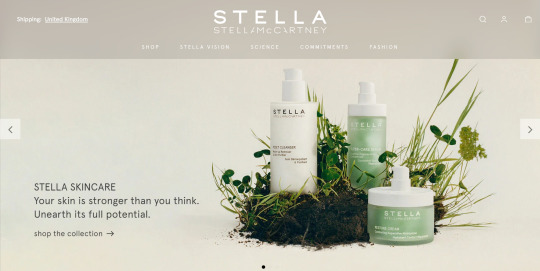
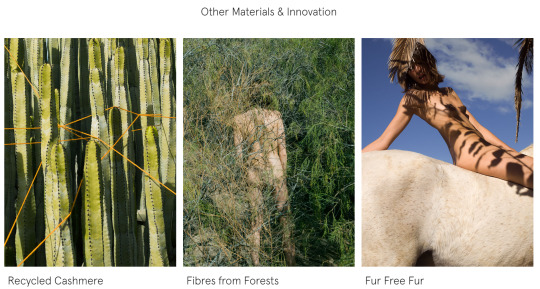
0 notes
Photo






DEATH OF CLEOPATRA TOP
IN COLO ONYX
SUBSURFACE 3D original textile
Egyptian Mako Cotton Blend
Available in Onyx and Sand
Inspired by the legend of Cleopatra’s death, this SUBSURFACE original textile uses organic striations to imitate a body wrapped by a serpent. This top has an off-the-shoulder fit with a sheer base and extra long sleeves. Pair this top with the Death of Cleopatra Pant for a full look.
For sizing, please see our measurement chart here. If you’re on the cusp, we suggest you size up. Don’t hesitate to email [email protected] with any fit questions. Jos wears an XS.
Packaging: Our polybags are waterproof, reusable, recyclable, and biodegradable. Our mailers are made from 100% recycled materials. They’re reusable, compostable, and biodegradable. We’ve partnered with our courier to ensure each shipment ships 100% carbon neutral (yay!).
Circularity: At the end of your garment’s life cycle, please don’t throw it away! Our circularity program allows us to provide you with a free shipping label so you can ship it back to us. We’ll then work with a third party to strip the garment to its natural fibers and give the garment a second life.
Fabric Care: 80% Egyptian cotton, 20% nylon. Please treat this garment with extreme care. Dry clean or hand wash with cold water.
0 notes
Text
Noida firm gets IIT - R tech for making biodegradable polybags
Noida firm gets IIT – R tech for making biodegradable polybags
Roorkee : IIT – Roorkee on Tuesday transferred the technology for making biodegradable polybags to a Noida-based private firm. The firm, Agrsar Innovatives LLP, uses the institute’s technology for its commercial benefit and will manufacture environment-friendly polybags in large quantities. Noida firm gets IIT The chemical engineering department of the institute had developed thermoplastic…
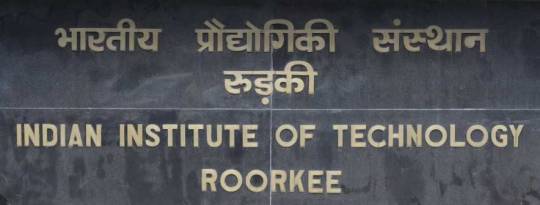
View On WordPress
0 notes
Text
Biodegradable Polybags
Eco Garment Bags makes the most eco-friendly biodegradable polybags. Biodegradable plastic bags are marketed as more eco-friendly solutions. Explore more- https://www.ecogarmentbags.com/

#Biodegradable Polybags#Sustainable Fashion Packaging#Sustainable Packaging Fashion#Recyclable Mailers
0 notes